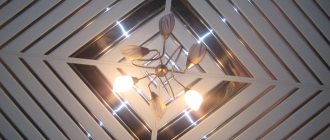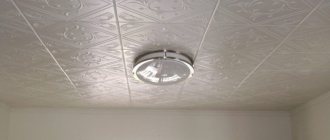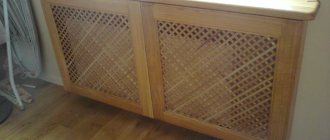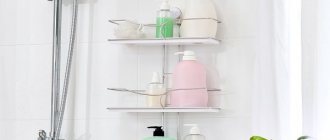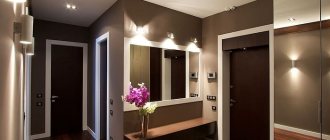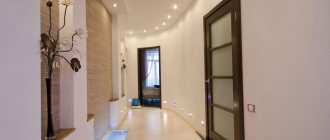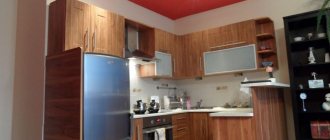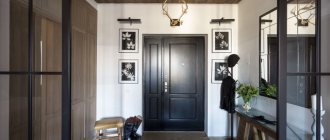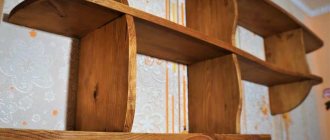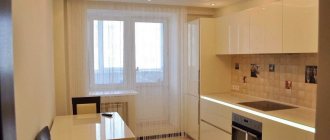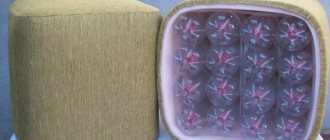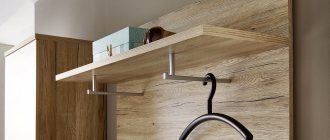The ceiling is not only a part of the room that limits it from above, it plays an important role - it determines the overall appearance of the room and makes it cozy. If designed correctly, it can visually increase or decrease the space and divide it into functional zones. The mood of the household and the impression that the guests have when visiting largely depends on the chosen decoration, which can both darken or give a solemn look to the interior.
It is necessary to finish the ceiling very carefully, since it is always in sight and the slightest flaw or defect will be noticeable. The construction market offers a huge selection of building materials, the use of which will allow the surface to match any design. The ceiling panels, which occupy a huge niche, deserve special attention. They are popular and are an excellent alternative to old-fashioned wallpaper, plaster, and drywall.
Peculiarities
The use of panels for finishing allows you to quickly update the ceiling in a house or apartment, while the costs associated with repair work will be minimal. The finishing material consists of slabs of various sizes. Based on the method of fastening, they can be divided into two main groups:
- The elements are mounted directly to the ceiling. The connection to the surface occurs by gluing the plates to it. Such options include foam plastic, polystyrene, and individual PVC strips.
- Installation is carried out on a pre-prepared frame and sheathing. This group includes aluminum, MDF, metal, and plastic panels.
Panel ceilings are found everywhere. This is due to the fact that using building materials, you can give the room the necessary style, combine the type of ceiling with the selected floor covering and wall decoration, and merge with the overall interior of the room.
Frame installation
The first thing to do is find out the lowest corner in the room. To do this, the height of the ceiling is measured at the corners. In that corner there is a 5 cm deviation from the ceiling. From this point, using a laser level along the perimeter of the walls, lines are drawn on which the profile guides will be fixed.
- Now you need to cut and secure the profile to the ceiling. It is cut to the width of the room and mounted orthogonally from the wall of the room.
- Here you need to take into account that PVC panels are installed along the room. That is, orthogonal to the wall with the window.
- After all, this way you can prevent the joints between the panels from being visible. When the room is large, first markings for hangers are drawn on the ceiling.
They are mounted and secured to the base of the ceiling with self-tapping screws on plastic dowels. Then the profiles are installed clearly horizontally. The frame must be assembled in one horizontal plane. Here the ceiling profiles with their edges should fit into the guide profiles. At this stage, the frame is already prepared.
Advantages and disadvantages
The demand for ceiling tiles is due to various factors. They have excellent aesthetic properties and highlight the interior of the room, made in a variety of styles. They are used in any room, be it an entrance hall, kitchen, living room, balcony or loggia. The main advantages of the material include the following characteristics:
- low cost;
- simple installation, almost anyone can do the work, and there is no need to buy additional special tools; for finishing, improvised construction equipment, which can be found in every home, is suitable;
- most of the raw materials used for the manufacture of products are moisture resistant, which makes it possible to install structures in the bathroom, toilet, and other rooms with high humidity;
- using the panels, perfectly flat surfaces are created, while it is easy to hide wiring and utility lines under them;
- the coating allows you to mask any defects, such as cracks, irregularities, and floor joints;
- if one of the elements is damaged, you can easily replace it yourself;
- many models are distinguished by high heat and sound insulation;
- most materials can be easily cleaned with standard cleaning products;
- products are characterized as safe, even those made of plastic, they do not emit harmful substances;
- the slabs are available in different sizes, which makes it possible to use them in rooms of different sizes;
- Fire-resistant components are used for manufacturing.
Ceiling panels also have certain disadvantages. With their help it is impossible to create complex structures with several levels. On large areas the coating does not look attractive enough. Quality, and therefore service life, depend on the price. Panel finishing is unstable to mechanical damage and sunlight; some types begin to crumble after a certain time.
Recommendations
When purchasing goods, everyone pays attention to the manufacturer. Image and reputation mean a lot and are a kind of indicator of quality
PVC panels in this sense are no exception; there are hundreds of manufacturers on the market, but only a few have won consumer recognition.
Venta (Belgium). The company is a leader in the finishing materials market in Europe and around the world. The company regularly opens new production facilities in various countries and in 2003 a plant began operating in Russia. This has made it possible to reduce the cost of slabs for domestic buyers - now Russians can buy models of European quality at affordable prices. The assortment list includes a large selection of panels of all colors and shades, the products have the property of increased strength, and printed panels are also available.
How not to make a mistake in choosing panels, watch this video.
Ceiling panel materials
Products are made from different raw materials, which determine their functionality and appearance. Mainly used for production are MDF, glass, metal, PVC, polystyrene foam, wood, aluminum, fiberboard, plasterboard, and other components. The main purpose of such structures is decoration. However, there are options that have heat and sound insulation properties, panel heaters, and moisture-resistant models designed for damp rooms.
The offered selection of slabs is quite large. It is very difficult to decide among such diversity. After all, not only the appearance, but also the method of fastening depends on the material. For example, for cassette ceilings, Armstrong suspension systems are very popular, they are used everywhere, they can be combined with products from other manufacturers. Let's take a closer look at the existing types of slabs.
Wooden
Natural ingredients used for cladding are always popular. They give the room a solid look and emphasize the refined taste of the owners of the house. With the help of this building material they create a very prestigious interior that corresponds to eco style.
One of the main finishing options is wooden slatted boards (lining). This type of building material is known to everyone; it is also used to decorate walls. There is a wide variety of models, but they are all united by the installation method. All slats are mounted on a wooden or profile frame.
Square slabs are less common. Their cost is higher than their slatted counterparts, installation is more difficult, but the use of such elements gives the room a unique, original image, especially carved models.
Bamboo and cork panels deserve special attention, as they can add an exotic touch to the room. The first option is a woven mat made from thin slats of bamboo. Although the cork has an unconventional design, it is not suitable for every home.
Wood is best used in dry rooms. To install such structures in the bathroom or kitchen, it will be necessary to treat them with special paints and impregnations that increase the wood’s resistance to moisture.
Metal
Panels made of metal are used in rooms where it is necessary to organize good ventilation and disguise the fire extinguishing system. For the production of high-quality products, aluminum is mainly used; budget options are also produced, which are a thin-walled sheet of steel coated with nickel or zinc.
The range of metal models is quite wide. They can have a matte, glossy, mirror, decorative (stone, wood) coating. There are options with polymer coloring, original texture, and variations with built-in infrared elements that can heat the space. With their help, communications are seamlessly sewn up.
Metal structures are characterized by fire-resistant and moisture-resistant properties. Suitable for cassette and slatted coverings. The first method is used mainly in public, commercial, and entertainment buildings. The second has found its application in residential premises, in rooms with high humidity, although the presence of a large assortment allows them to be used almost everywhere.
The slats look like brackets with curved edges, which are attached to special guides equipped with hooks. Since metal does not allow air to pass through, a ventilation gap is always made between the ceiling sheet and the walls. The gap is masked with a special plinth.
Basalt or fiberglass panels
Fiberglass boards are an excellent option for repairs. They are made from ultra-thin glass fibers bonded with polyester resin under high temperatures, which provides the finished product with high strength and a uniform structure. In addition, this material has such qualities as moisture resistance, fire resistance, retains heat well, it is chemically inert, and impact resistant. In addition, it has good decorative properties, which allows the use of fiberglass not only in residential buildings, but also in offices, administrative buildings, public canteens, and even in production workshops.
Basalt panels (stone wool) consist of 95% of stone threads stretched under the influence of high temperatures, the remaining 5% is occupied by special binding additives. Finished products are used to create home interiors, industrial and medical institutions. This building material perfectly absorbs sound, does not burn, does not even melt, and basalt fiber does not contain organic matter, which prevents the appearance of mold on the surface.
Plastic and polyurethane panels
The material is easy to clean from contaminants, and it is also inert in water, so most often such models are installed in the bathroom, corridor, hallway, or loggia. Less commonly used in the kitchen and bathhouse. This is due to the fact that plastic, when exposed to temperatures exceeding 60 degrees, begins to melt and release toxic substances.
If there is a fire or plastic melts, it must be extinguished and cooled. Hot materials coming into contact with your skin can cause serious burns.
All polymer structures can be divided into two large groups: rack and square. Great demand for the material is associated with its properties, such as:
- pliability, plastic can be given any shape;
- products are available in different colors and textures;
- the cost is low, which allows you to save on repair work;
- high-quality models do not fade when exposed to sunlight;
- installation can be done by hand.
The main disadvantages of the building material include its low mechanical strength, but this is not noticeable at altitude. It also cannot withstand high temperatures, which narrows its scope of application.
MDF panels
They are often used in public buildings, offices, and retail premises. In the house it is mainly used for cladding the hallway, loggia, and, less often, the living room and bedroom. Can be installed both on walls and on ceilings. They are a wood fiber board obtained by pressing crushed wood chips at high pressure and temperature.
Depending on the appearance of the front side, all models are divided into flat and embossed. The first ones are covered with valuable wood veneer and polymer film, while the second ones have a three-dimensional pattern. Paints and varnishes are used as coatings. Rack, square and sheet versions are available.
The products are characterized by low cost and ease of installation, a large selection of colors, the presence of a natural pattern, and a decorative image. When installing them, no additional preparation of the walls is required; wiring and utilities can be hidden under them.
Glass and mirror panels
Such designs are used in the interior design of public and residential premises. With their help, you can visually expand the space and perform zoning. At the same time, not only mirrors have reflective properties, these can be plastic, polyurethane plates, covered with a mirror film on top, aluminum slats, treated with a special reflective layer, which are much lighter than glass.
Analogues of glass tiles, although they weigh less, do not look as solid. Glass panels, thanks to the application of amalgam, are in no way inferior to a standard mirror. There is a wide variety of such coatings, which can be made from silicate or acrylic plexiglass. In this case, the mirror ceiling can have a matte finish or artistic painting.
The price of such finishing is very high. But the plates are characterized by a long service life, resistance to moisture and temperature changes. You can place any lighting fixtures under them, giving the room a unique, unique design.
Expanded polystyrene panels
Among the wide variety of materials, many prefer polystyrene foam. This is a type of foam. The raw materials are foamed in a special way, making the product lightweight. The coating has good aesthetic characteristics, is low in cost, and can be used to bring various design ideas to life. The product is environmentally friendly, despite the fact that when exposed to high temperatures it emits toxic fumes.
There are several types of this building material. They differ in the method of production. This can be pressed tiles, which are produced by mechanical stamping; extruded - obtained in a complex way using a special unit (extruder); injection - produced by pouring raw materials into a mold.
Installation can be done by gluing the slab directly to the ceiling. Ideal for weak floors that cannot withstand significant loads. Before starting work, the surface must be prepared, defects, cracks, and chips must be eliminated. Experts recommend gluing building materials from the center of the room, which is determined by marking.
Drywall
The material, familiar to many, is often used to decorate the ceiling. Installation requires a powerful frame that can withstand heavy loads. The substance is environmentally friendly, malleable when processed, and can be used to create smooth, beautiful surfaces.
There are many types of this building material. They produce standard, moisture-resistant, fire-resistant, arched, acoustic, and other models. Thickness varies from 6.5 mm to 12.5 mm. It is not recommended to install thick slabs on the ceiling. It is better to hem regular ones, up to 9.5 mm thick.
Before installation, the material should lie for a while in a dry room so that excess moisture evaporates from it. Installation can be done without lathing, provided there is a sufficiently flat wooden surface. It is generally customary to assemble suspended structures.
PVC panels
One of the most affordable building materials. PVC panels are easy to install and easy to maintain. Installation can be performed by anyone with minimal construction skills. The finished products are very light and have a cellular structure.
PVC plates are a real find for any designer. Their color palette is varied, they are able to imitate natural materials. They can be covered with thermal film on top, have a laminated coating, and can also be directly printed on. According to the method of connecting the lamellas to each other, there are three main groups: seamless, embossed, and chamfered.
According to shape and size, all PVC panels can be divided into slatted, wall, tile, and sheet. Installation can be done on a wooden or metal sheathing, even on a plastic frame. Installation begins from a corner located on the opposite side of the window or door.
Instructions for installing PVC panels on walls over a lathing frame
Before covering the wall with PVC panels, the surface should be cleaned. There is no need for serious leveling, but if you plan to finish a bathroom, kitchen or other wet room, it is recommended to waterproof the walls and coat them with an antiseptic.
To form the lathing structure, wood blocks measuring 2x2 cm can be used. They are much cheaper than metal elements. However, it is not recommended to use wooden sheathing for rooms with high humidity levels. Before using wood, it must be thoroughly dried so that the moisture content of the material reaches the permissible norm - 12-15%. Don't forget to pre-treat the bars with an antiseptic.
To equip a metal frame, you will need a profile element UD (contour part) and CD (guides).
Installation diagram of panels and additional structural elements
Regardless of whether you make ceilings from PVC panels with your own hands or sheathe walls, the construction of a lathing structure should begin with markings. If you are working with walls, you first need to determine the lower level, taking into account the further installation of the baseboard. As a guide, you need to take the most protruding point of the wall. It is she who will determine the indentation of the sheathing.
After this, the line of the upper level (with a reference to the ceiling) and the side levels is determined. It is recommended to use a building level to control the upper and lower zones, and a plumb line for side elements.
How to attach a PVC wall panel: working with frame and cladding
The sheathing elements are fixed using direct hangers. The screws are spaced in increments of 20-25 cm (wooden frame) or 15-25 cm (metal frame). The installation of bars or metal profiles is carried out first along the edge, then inside the structure. This will ensure reliable fixation of the trim around the edges.
Various ways to install PVC panels
When installing internal profiles, it is worth considering the type of panel installation you have chosen - horizontal or vertical. The slats will subsequently have to be attached perpendicular to the guides fixed with screws.
Scheme for installing panels on the sheathing:
Installation of external and internal moldings. Installation of the first panel and fixation with a clamp (the tenon of the lamella must fit into the profile). Install the second panel into the groove of the previously installed lamella and fix it in a similar way. Installation of material to the end of the wall. Cut the last panel, taking into account that the finishing material should be installed all the way to the corner area. In this case, a gap of 2-3 mm should form between the tenon of the last element and the groove of the previous lamella. The cut side should be placed in the profile and the final element should be inserted into place.
For a more detailed look at installing PVC wall panels with your own hands, use the video - an overview of this procedure.
Installation methods
You can decorate the ceiling with panels of various types. Before starting work, all your actions must be carefully planned. It should be noted that products may differ in thickness, width, appearance of the front part, and fastening features. There are several ways to attach structures to the ceiling:
- Cassette suspension. Decorative modules and various profiles are mounted simply and quickly on pre-prepared guide rails;
- Rack mounting. Installation is carried out on a special frame. Rack profiles are adjusted to size. Lean it against the ceiling and snap it into place with the tire fasteners;
- Gluing. The method is suitable for lightweight polystyrene, laminated, extruded boards. For fastening, it is better to choose special compounds, but simple PVA or Moment glue will do. You can create the effect of a seamless ceiling by treating the joints with silicone sealant;
- Tongue-groove system. With the help of a locking connection, the elements are easily and reliably joined, creating a smooth surface. They are mounted on a wooden sheathing. Installation does not require leveling the walls. The mounting method is suitable for plastic and MDF models.
Calculation
In order for wall surfaces to be finished properly, you need to carefully and scrupulously calculate the need for the blocks used and the components for them.
Standard dimensions of wall panels are:
- thickness 0.6-1 cm;
- width 25-30 cm;
- length 250-600 cm.
The key importance, according to professionals, is the width. If you choose the largest possible products, you can reduce the number of seams, and the appearance of the installation will be closer to a continuous surface. But during the work itself, narrow structures are more practical because they are easier to bend. And the relative lightness of each block makes itself felt.
The calculation itself begins with determining the perimeter of the sheathed base. From this figure the perimeter of each door, each window or other part that for some reason cannot be sheathed is subtracted. The result obtained is divided by the perimeter of a single block (only remembering that part of the block material will go into segments). Rounding in calculations is always carried out upward, and a margin for cuts is provided in the amount of 10%. If you have no experience, you can even leave 12-14%.
You can calculate the need for plastic sheathing if you take into account the following points:
- slats will have to be placed not only on the edges of the walls, they need to surround the openings of doors and windows;
- the standard profile gap is 0.3 m;
- the very first profile is always turned at right angles to the future installation plane;
- the slats themselves are fastened to the walls using self-tapping screws or dowels with a gap of 400 mm;
- The guides are attached to the slats at a distance of 500 mm.
Design and colors
Thanks to modern materials, you can update your ceiling without much difficulty. The easiest way is to use ceiling panels. With their help, you can create both standard and the most unimaginable interior design. In addition to traditional materials - metal, plastic, wood, glass, special moisture-resistant and acoustic hanging products can be used.
Properly selected wooden lining looks great on the ceiling. You can create weighty compositions from natural material, giving it different textures and colors. Cork, bamboo plates, and mineral lining made of sawdust look original. Such a ceiling would be appropriate in an eco-friendly interior.
Gray metal panels will look good in a high-tech, minimalist interior. A popular solution is alternating matte and glossy slabs. Painted polymer, tension surfaces will complement the art house. The most imaginative design can be realized using structures made of polyvinyl chloride. Products are produced in various textures, colors, shapes. Mirror and glass elements cover any room. A popular design idea is voluminous ceiling decor. The surface with 3D elements in the form of waves, honeycombs, and various vegetation looks original.
Examples of application in the interior of an apartment/house
Classic cassette panels made of natural wood always remain stylish. Even an inexpensive analogue will look beautiful and aristocratic. The slatted finish in light colors will fit perfectly into the Scandinavian style and minimalism. This interior is suitable for a small apartment or a spacious country house.
Acrylic tiles will look good in any room. This is a universal material for the bedroom, toilet, kitchen, hallway. Economical plastic and wooden lining will create a beautiful, smooth ceiling, even on an uneven surface. The white foam finish will fill any room with light and lightness. Using ceiling panels, you can create a surface in a restrained, classic style or assemble a complex multi-level structure with designer lighting.
Tips for choosing
The variety of types and shapes of panels makes their choice difficult. First of all, you should decide on the material of manufacture. It should match the overall interior of the room, wall and floor decoration. In order for the structure to last for a long time, the choice should be made taking into account the characteristics of each type:
- Plastic plates must be smooth with a clear geometry and uniform distribution of the pattern. To ensure sufficient strength, the element must be squeezed with force with your fingers;
- Wooden products should not have cracks or chips. For each type of wood, small errors are acceptable, which reduces their cost. But it is better to use elements with a clear pattern, without burrs, scratches, or blue stains;
- Foam blocks should be selected only with a smooth, clear, identical pattern over the entire surface. High-quality tiles do not break when dropped or lightly shaken;
- 3D panels have various characteristics and features. When giving preference to this type of finishing, you should take into account the purpose of the room. These can be natural models, fireproof, moisture resistant;
- Aluminum parts must have a minimum thickness of 0.5 cm. If they are thinner, the structure can quickly deform at the initial stage of operation.
